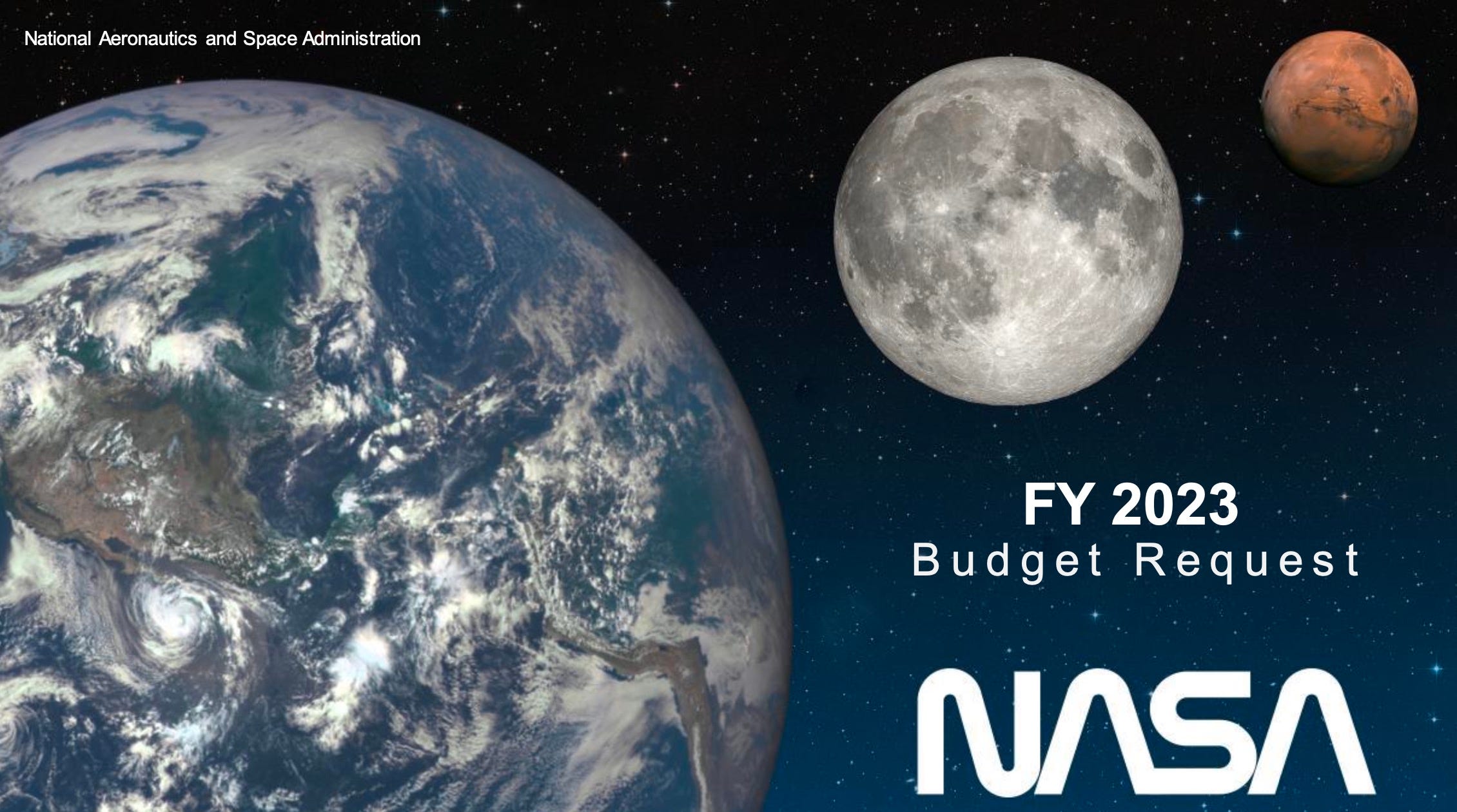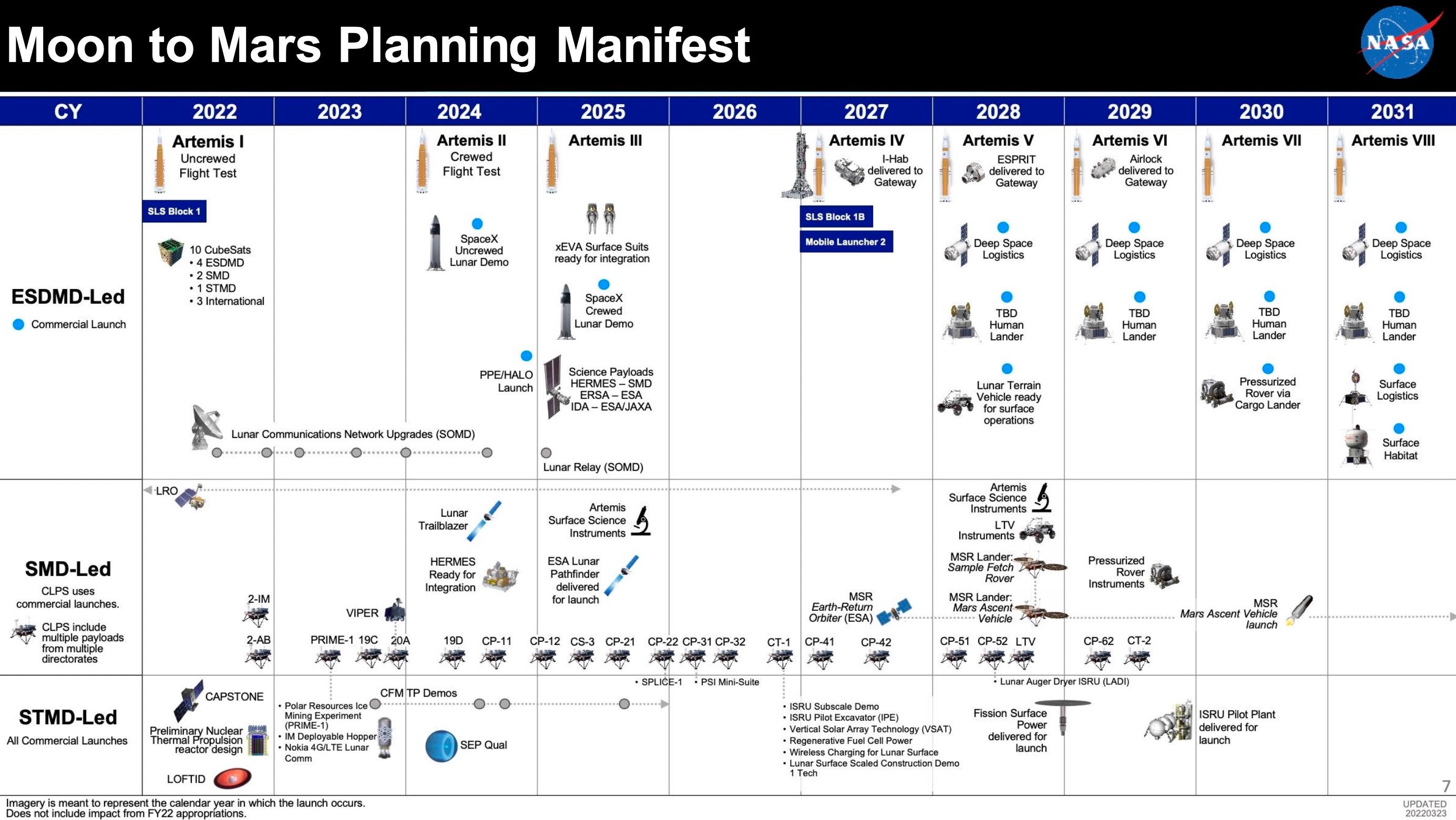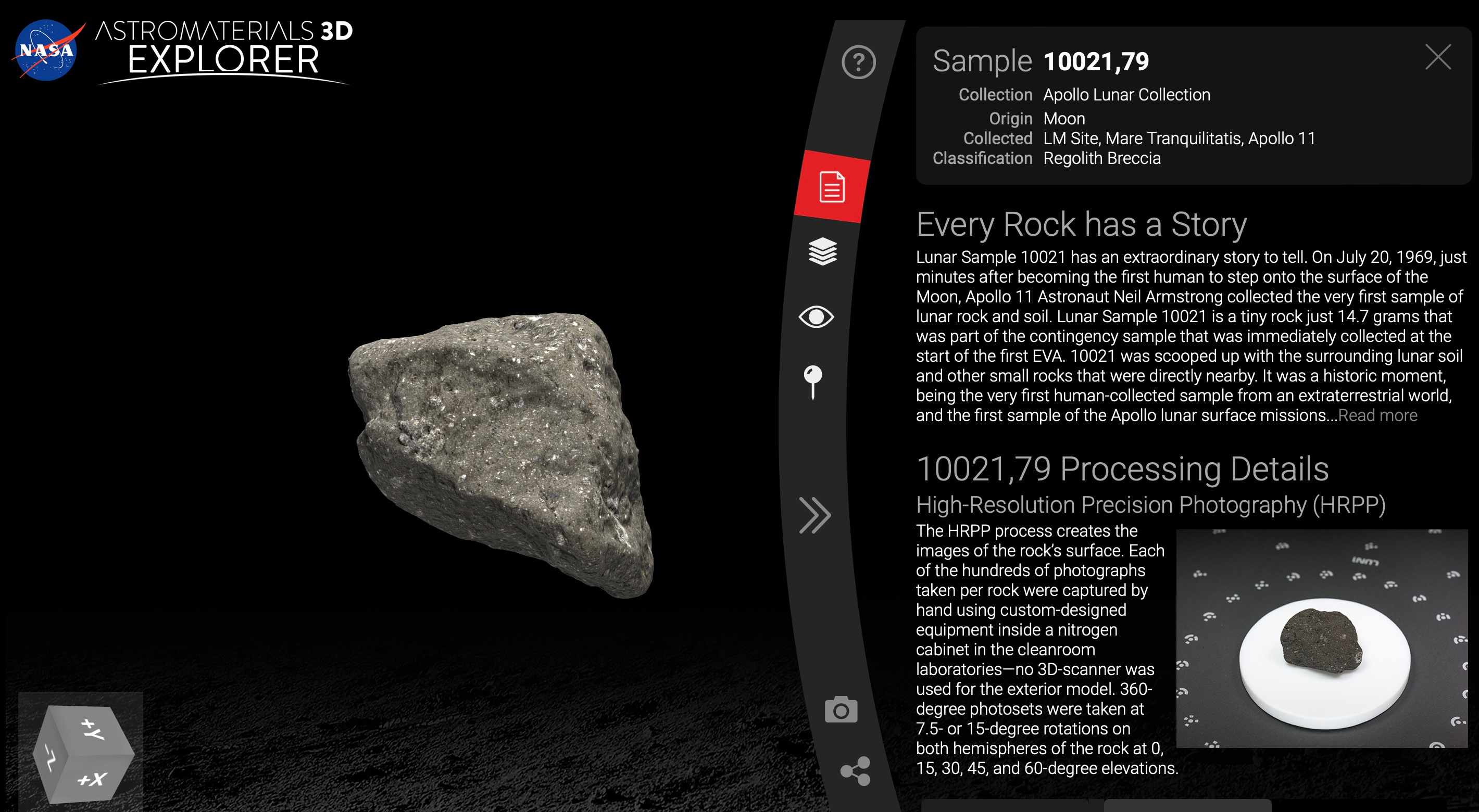Moon Monday #71: NASA’s budget, Artemis mission delays, exploring Moon rocks in 3D, and more updates
NASA’s latest budget request finally acknowledges overlooked parts of Artemis
The U.S. Presidential FY 2023 budget request for NASA released on March 28 proposes nearly $26 billion in funding for the space agency, an 8% increase over the amount approved by the U.S. Congress for FY 2022. The budget mostly continues to ask for similar levels of funding for lunar programs like the SLS rocket and Orion spacecraft while requesting increases to improve the state of other overlooked programs key to NASA’s Artemis campaign to sustainably return humans to the Moon. These latter bunch include the following.
- NASA is asking $1.5 billion, compared to last year’s $1.2 billion, for development of crewed lunar landers by U.S. companies. This is modest at best because the funding would be divided between NASA’s selection of SpaceX Lunar Starship for Artemis III, an alternative provider for the same mission, and the previously discussed sustainability upgrades for Lunar Starship as well as the agency selecting a second company, as part of the Sustaining Lunar Development (SLD) project, to compete with said Starship for future crewed missions. Related: NASA somewhat quietly released the draft SLD solicitation on March 31 to get industry feedback before releasing the final solicitation by August.
- NASA is requesting $276 million instead of the previous $100 million to accelerate development of lunar spacesuits, which are delayed, as well as crewed rovers and other mobility systems.
- The agency also wants $48 million to begin meticulous planning for future Artemis missions, a baseline sustainable habitat, and more.

Of course, we’ll find out later this year how much of NASA’s budget request actually gets funded by the U.S. Congress. While the FY 2023 request starts working towards closing critical gaps in NASA’s planning of its lunar ambitions, the FY 2024 request will need to be bolder for hardware to materialize in time.
More launch delays for Artemis Moon Missions
A slide from the FY 2023 budget request summary reveals that several Moon missions part of or related to NASA’s Artemis campaign have been delayed, including a couple of commercial lunar landings funded by the agency’s CLPS program.

- Intuitive Machines’ second Moon landing mission has been delayed from December 2022 to 2023.
- Firefly’s first Moon landing mission has been delayed from September 2023 to 2024.
- The uncrewed landing demonstration of SpaceX’s Lunar Starship, before carrying crew for Artemis III, has been delayed from 2023 to 2024.
- ESA’s Lunar Pathfinder has been delayed from 2024 to 2025 (NASA is planning to use Pathfinder as a relay service for an upcoming CLPS mission)
- Artemis IV, which will not attempt a lunar landing and instead advance the assembly of the NASA-led international Gateway lunar station, has been delayed to 2027 instead of 2026. Specifically, Artemis IV will deliver the ESA- and JAXA-developed International Habitation module (i-HAB) to the Gateway. By that point, Gateway would be in its unique lunar orbit and consist of its two initial modules—the Power and Propulsion Element (PPE) and the Habitation and Logistics Outpost (HALO)—launched on a SpaceX Falcon Heavy rocket in late 2024. i-HAB will provide more space for crew to live, work, and conduct research in compared to the HALO module. Artemis IV will not only be the first mission to send astronauts to the Gateway but also be the first flight of the SLS rocket’s Block 1B version with an upgraded upper stage.
- The Artemis V mission, which will see humans landing on the Moon after visiting the Gateway, will now launch in 2028 instead of 2027. The mission will deliver ESA’s ESPRIT communications and refueling module, the Canadian robotic arm system, an advanced crewed lunar rover, and astronauts to the Gateway. A commercial human landing system, competitively selected by the aforementioned process, will dock with the Gateway and then land the astronauts and their rover on the Moon.
The SLS rocket’s wet dress rehearsal starts today
The NASA SLS rocket’s wet dress rehearsal test originally scheduled for April 1-3 was first delayed by a standard hold procedure due to four lightning strikes to the launchpad’s protective lightning towers on April 2 followed by an unrelated issue on April 3 with safely pressuring the rocket’s mobile launcher. Technicians fixed the issue overnight and as of the time of this post being published, the rocket’s fueling and ensuing countdown rehearsals are planned for April 4 . If NASA doesn’t complete the test today, there might be more delays due to logistical challenges. Related: Here’s the detailed countdown timeline for the test, which will be similar to the one during the launch of the SLS rocket for the Artemis I Moon mission in June or later.
Astromaterials 3D lets you hold Moon rocks
Bringing samples from the Moon and other worlds is exciting as it allows us a really close and definitive look at our solar system’s history. But getting access to Moon rocks is difficult for average folks like me. This is where NASA ARES division’s website Astromaterials 3D comes in. The site, which recently added 20 new samples, allows us to view Apollo rocks and lunar meteorites in an information-rich 3D viewer and manipulator, almost as if a rock is in your hands. Note: If opening the Explorer on a mobile browser, request the site’s Desktop version to be able to use it.

With the Astromaterials 3D explorer, we can follow each rock’s history, watch actual footage of the specimen being collected by an astronaut in case of Apollo, slice the sample, browse curated descriptions by scientists, and download high-resolution 3D model files. The Astromaterials 3D team created these models using an elaborate process that includes manually photographing the rocks from at least 240 different angles in a nitrogen cabinet in a cleanroom and using a raft of scanning tools.
Related:
- virtualmicroscope.org lets you see more than 500 Apollo samples with a virtual microscope.
- The UK has a nice Borrow the Moon program, wherein schools can get a box containing a slice of moon rock, meteorite samples and related learning activities for up to a week.
- Recent re-research on the lunar rock sample troctolite 76535, collected by Apollo 17 in 1972, finds that the Moon’s magma may have cooled much faster after our Moon’s formation than previously thought. It’s yet another example of how reexamining Apollo samples using modern techniques is reshaping our understanding of planetary evolution.
More Moon
- As one of the first benefits of a broader technical support agreement signed last year between ESA and ISRO, ESA will provide backup communications via their Estrack network for India’s Chandrayaan 3 mission launching later this year. This development follows a similar agreement between ISRO and NASA last month, the details of which and that of the mission I’ve covered in the previous Moon Monday issue.
- On March 28, Singapore became the 18th country to sign the U.S.-led Artemis Accords for cooperative space exploration. It’s the third Asian country to sign the Accords, following Japan and South Korea.
- ESA has awarded €75 000 each to five winning teams part of a challenge for proving their rover’s ability to prospect for resources in a lunar polar terrain analogue testbed. This award will be used to enhance their designs for a final test, the winning one of which will be considered for a future ESA mission.
- Gallery of weird yet wonderful features on our Moon:

Thank you The Orbital Index for supporting me and powering this week’s Moon Monday!
Everyone, I’m writing this world’s only newsletter dedicated to covering global lunar exploration and science developments. It’s free, with no ads. Donate to keep it going.
